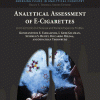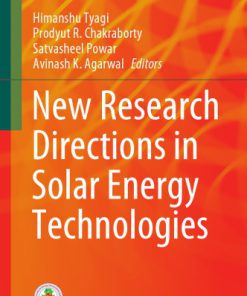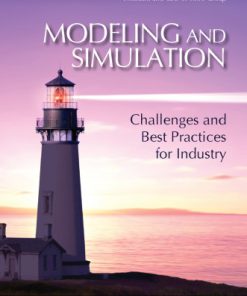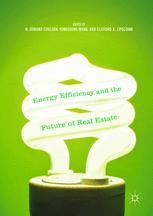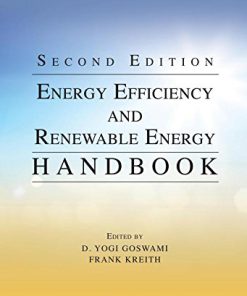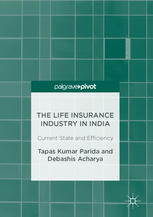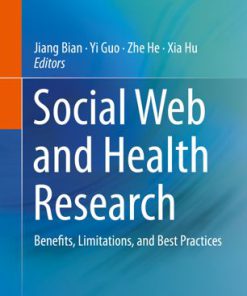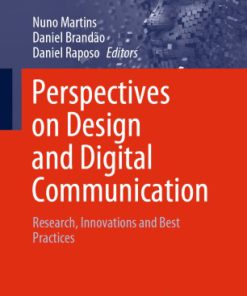Energy Efficiency in the Minerals Industry Best Practices and Research Directions 1st Edition by Kwame Awuah Offei 3319541990 9783319541990
$50.00 Original price was: $50.00.$25.00Current price is: $25.00.
Energy Efficiency in the Minerals Industry: Best Practices and Research Directions 1st Edition by Kwame Awuah-Offei – Ebook PDF Instant Download/DeliveryISBN: 3319541990, 9783319541990
Full download Energy Efficiency in the Minerals Industry: Best Practices and Research Directions 1st Edition after payment.

Product details:
ISBN-10 : 3319541990
ISBN-13 : 9783319541990
Author: Kwame Awuah-Offei
This book presents a state-of-the-art analysis of energy efficiency as applied to mining processes. From ground fragmentation to mineral processing and extractive metallurgy, experts discuss the current state of knowledge and the nagging questions that call for further research. It offers an excellent resource for all mine managers and engineers who want to improve energy efficiency to boost both production efficiency and sustainability. It will also benefit graduate students and experienced researchers looking for a comprehensive review of the current state of knowledge concerning energy efficiency in the minerals industry.
Energy Efficiency in the Minerals Industry: Best Practices and Research Directions 1st Table of contents:
1 Introduction
Abstract
1.1 Introduction
1.2 Highlights
1.3 How to Use This Book
1.4 Future Research Directions
1.5 Conclusions
References
Ground Fragmentation
2 Energy Distribution in the Blast Fragmentation Process
Abstract
2.1 Introduction
2.2 Stored Energy in the Explosives and Release Balance
2.2.1 Reaction Product Hierarchy
2.2.2 Oxygen Balance (OB)
2.2.3 Properties of Explosives Related to Energy Stored in the Explosive
2.2.3.1 Density
2.2.3.2 Velocity of Detonation (VOD)
2.2.3.3 Detonation Pressure
2.2.4 Energy Stored in the Explosive
2.2.4.1 Heat of Reaction
2.2.4.2 Heat of Formation
2.2.4.3 Heat of Detonation (Detonation Energy)
2.2.4.4 Energy as Expansion Work
2.2.4.5 Final Remarks
2.3 Balance and Use of the Expansion Work Energy Delivered to the Surrounding Rock
2.3.1 Fragmentation Energy (E_{{rm F}})
2.3.2 Seismic Energy (E_{{rm S}} )
2.3.3 Kinetic Energy (E_{{rm K}})
2.3.4 Fragments Rotation Energy (E_{{rm R}})
2.3.5 Energy Nonmeasurable (E_{{rm NM}})
2.3.5.1 Energy of Plastic Work, Radiation, and Acoustic
2.4 Application of Energy Input for Ground Fragmentation
2.5 Summary
References
3 Effect of Hole Stemming Practices on Energy Efficiency of Comminution
Abstract
3.1 Introduction
3.2 Types of Stemming
3.2.1 Sizing of Stemming Material
3.2.2 Water Effects on Stemming
3.3 Mechanics of Stemming
3.3.1 Stemming Resistance
3.3.2 Borehole Pressure
3.3.3 Gas Flow Models and Optimal Stemming Length
3.3.4 Stemming Pressure Losses
3.3.5 Ejection Model
3.3.6 Retention Model
3.3.7 Borehole Springing
3.4 Nonideal Stemming
3.4.1 Increasing Stemming Resistance
3.4.2 Stemming Plugs
3.4.3 Airdecks
3.5 Loading Stemming
3.6 Stemming Charges
3.7 Decking
3.8 Summary
References
4 Effect of Wave Collision on Fragmentation, Throw, and Energy Efficiency of Mining and Comminution
Abstract
4.1 Introduction
4.2 Rock Fragmentation in Bench Blasts
4.2.1 Optimized Fragmentation
4.2.2 Impact of Blast Performance on Fragmentation and Downstream Energy Efficiency and Costs
4.2.3 Rock Fragmentation Analysis Methods
4.3 Theory of Detonation and Shock Waves
4.3.1 Detonation Waves
4.3.2 Shock Waves
4.3.3 Colliding Shock Waves in Strata
4.4 Timing Effects on Fragmentation
4.4.1 Historical Improvement in Accuracy of Detonators
4.4.2 Review of Timing Research with Relation to Fragmentation and Throw
4.5 Full-Scale Experiments on Shock and Detonation Wave Collisions at a Granite Quarry
4.5.1 Blast Design and Experimental Setup
4.5.2 Discussion of the Results
4.6 Conclusions
References
5 Energy Efficiency of Drilling Operations
Abstract
5.1 Introduction
5.2 Energy in Drilling
5.3 Drillability Studies
5.4 Future Techniques
5.5 Conclusions
References
6 Energy Efficiency in Rock Blasting
Abstract
6.1 Introduction
6.2 The Energy Balance of Blasting
6.2.1 Fragmentation Energy
6.2.2 Seismic Energy
6.2.3 Kinetic Energy
6.3 Measurements and Calculation of Energy Components
6.3.1 Field Experiments
6.3.2 Fragmentation Energy
6.3.3 Seismic Energy
6.3.4 Kinetic Energy
6.3.5 Uncertainty Analysis
6.4 Discussion
6.5 Conclusions
Acknowledgements
References
Material Handling
7 Energy-Efficient Loading and Hauling Operations
Abstract
7.1 Introduction
7.2 Haul Trucks
7.2.1 Types of Trucks
7.2.2 Effective Parameters on Truck Productivity
7.2.3 Haul Truck Fuel Consumption
7.2.3.1 The Effect of Payload on Haul Truck Fuel Consumption
7.2.3.2 The Effect of Rolling Resistance on Haul Truck Fuel Consumption
7.3 Loading Units
7.3.1 Operations of Major Loading Units
7.3.2 Effective Parameters on Loading Energy Efficiency
7.3.2.1 Machine Design and Intelligent System
7.3.2.2 Mine Plan and Design
7.3.2.3 Operator Skill and Practice
7.3.2.4 Operating Condition
7.4 Conveyor Transport
7.4.1 Power Efficiency
7.4.2 Conveyor Belt Applications in Mining
7.5 Conclusions/Summary
References
8 Energy Efficiency in Cable Shovel Operations
Abstract
8.1 Introduction
8.2 Energy Efficiency of Cable Shovel Operations
8.2.1 Factors Affecting Cable Shovel Energy Efficiency
8.2.2 Ongoing Research Initiatives to Improve Cable Shovel Efficiency
8.3 Recommendations
8.3.1 Industrial Best Practices
8.3.2 Recommendations for Future Research
8.4 Summary
Acknowledgements
References
9 Benchmarking Energy Consumption of Truck Haulage
Abstract
9.1 Introduction
9.2 Benchmarking Techniques
9.2.1 Statistical Benchmarking
9.2.2 Model-Based Benchmarking
9.2.2.1 Optimization of Specific Fuel Consumption
9.2.2.2 Solution Procedure
9.3 Case Studies on Benchmarking of Haul Trucks
9.3.1 Statistical Benchmarking
9.3.2 Model-Based Benchmarking
9.4 Discussions
9.5 Conclusions
Acknowledgements
References
10 Role of the Operator in Dragline Energy Efficiency
Abstract
10.1 Introduction
10.2 Assessing, Identifying Key Factors, and Improving Dragline Performance
10.2.1 Assessing Dragline Performance
10.2.2 Identifying the Factors that Impact Dragline Performance
10.2.3 Improving Dragline Performance
10.3 Recommendations for Future Research
10.4 Summary
References
Mineral Processing and Extractive Metallurgy
11 Energy-Efficient Comminution: Best Practices and Future Research Needs
Abstract
11.1 Introduction
11.2 Comminution Energy Value Chain
11.3 Comminution Technologies
11.3.1 Crushing Technologies
11.3.2 Grinding Technologies
11.4 Comminution Circuit Designs
11.5 Operational Improvements
11.6 Energy Efficiency and Energy Benchmarking
11.7 Future Research Needs
11.8 Summary
References
12 Energy Efficiency of Electrowinning
Abstract
12.1 Introduction
12.2 Energy Consumption
12.3 Cell Voltage
12.3.1 Thermodynamic Potentials
12.3.2 Overpotential
12.3.2.1 Anode Overpotential
12.3.2.2 Cathode Overpotential
12.3.3 Solution Resistance
12.3.4 Other Resistances
12.3.5 Analysis of Cell Voltage
12.4 Current Efficiency
12.4.1 Side Reactions
12.4.1.1 Hydrogen Evolution in Zinc
12.4.1.2 Ferric Reduction in Copper
12.4.2 Short Circuits
12.5 Future Opportunities
12.5.1 Alternative Anode Reactions
12.5.2 Alternative Cathode Reaction
12.5.3 Alternative Anodes
12.6 Summary
References
13 Plant Automation for Energy-Efficient Mineral Processing
Abstract
13.1 Introduction
13.2 Process Automation
13.2.1 Hierarchy of Automation Functions
13.2.2 Automation Systems
13.3 Energy Efficiency Improvements
13.4 Case Studies
13.4.1 Energy Optimization of Crushing Processes
13.4.2 Control of Industrial Grinding Circuits
13.4.3 Real-Time Optimization of a Grinding Circuit
13.4.4 Energy and Profitability in Flotation Processes
13.4.5 Energy Efficiency of Concentration and Smelting
13.5 Conclusions
Acknowledgements
References
14 Energy Management Systems in Copper Smelting: The Atlantic Copper Case Study
Abstract
14.1 Introduction
14.2 Energy Management: The First Step Is to Raise Expectations
14.2.1 Benchmarking
14.2.2 Reviewing of Theoretical Studies
14.2.3 Global Assessment of Material and Energy Balances at HMC
14.2.4 A Global Perspective
14.3 Implementation
14.3.1 The Working Group or “The Energy Team”
14.3.2 Integration in the Organization
14.3.3 Measuring Energy Consumption
14.3.4 Defining the Action Plan
14.4 Results
14.4.1 Global Result
14.4.2 Examples of Some Results
14.4.2.1 Redesigning the Anode Furnaces
14.4.2.2 Reduction in Fuel Oil Consumption
14.4.2.3 Efficiency in the Power Plant
14.5 Conclusions
References
Renewable Energy and Miscellaneous Topics
15 Solar Energy Applications in Mining: A Case Study
Abstract
15.1 Introduction
15.2 Methodology
15.3 Solar Resources and Technology
15.4 Case Studies
15.4.1 Power Energy
15.4.2 Thermal Energy
15.5 Discussion of Key Considerations
15.5.1 Mining Operations
15.5.2 Energy Management and Renewable Energy Integration
15.5.3 Environmental Considerations
15.6 Future Challenges and Research
15.7 Conclusions
References
16 Energy-Efficient Mine Ventilation Practices
Abstract
16.1 Introduction
16.2 Mine Ventilation Fundamentals
16.3 Mine Ventilation Efficiency Improvement Areas
16.4 Some Ventilation Efficiency Improvement Strategies
16.4.1 Mine Ventilation Overall System Optimization
16.4.2 Auxiliary Ventilation
16.4.3 Ventilation on Demand
16.4.4 Leakage Control
16.4.5 Load Clipping
16.4.6 Underground Shop Air
16.5 Recommendations for Future Work
16.6 Summary
References
17 Technology Selection and Sizing of On-Board Energy Recovery Systems to Reduce Fuel Consumption of
Abstract
17.1 Introduction
17.2 Problem Characteristics and Requirements
17.2.1 Fundamentals of Calculating Energy Flow Rates and Quantities for Mine Haul Trucks
17.2.2 Recovering Potential Energy from Descent
17.2.3 Required Energy Absorption Rate (kW)
17.2.4 Recovering Kinetic Energy
17.2.5 Required Cycle Life
17.2.6 Implications of Mining Operations on ERS Sizing and Selection
17.3 Candidate Energy Storage Technologies and Their Potential for Beneficial Use in Mine Trucks
17.3.1 Chemical Batteries, EDLCs and LICs
17.3.2 Electromechanical Flywheels (EM-FWs)
17.4 Simulation Study of Mine Haul Truck with ERS Fitted to Assess Fuel Savings Benefit
17.4.1 Modelling, Simulation and Input Parameters
17.4.2 Using the Simulation Model
17.4.3 Results
17.4.3.1 Energy Recovered and Fuel Savings Expected in a 100 m Deep Mine
17.4.3.2 Fuel Savings Expected Over a Range of Mine Depths and Fuel Saving Benefit of Oversizing Ver
17.4.3.3 Cost Implications and Service Life Expectations
17.5 Review of Technologies’ Potential to Satisfy DEMHT ERS Requirements and Improve Fuel Efficien
17.6 Conclusions
People also search for Energy Efficiency in the Minerals Industry: Best Practices and Research Directions 1st:
energy industry examples
energy industry explained
energy efficiency in industry
energy efficiency in manufacturing
energy consumption in mining industry
Tags: Energy Efficiency, Minerals Industry, Best Practices, Research Directions, Kwame Awuah Offei
You may also like…
Science (General)
Energy Harvesting and Energy Efficiency Technology Methods and Applications 1st Edition Nicu Bizon
Engineering - Energy & Power Resources
Engineering
Modeling and Simulation : Challenges and Best Practices for Industry First Edition Dubois
Business & Economics - Industries
Energy Efficiency and the Future of Real Estate 1st Edition N. Edward Coulson
Business & Economics
The Life Insurance Industry in India: Current State and Efficiency 1st Edition Tapas Kumar Parida


